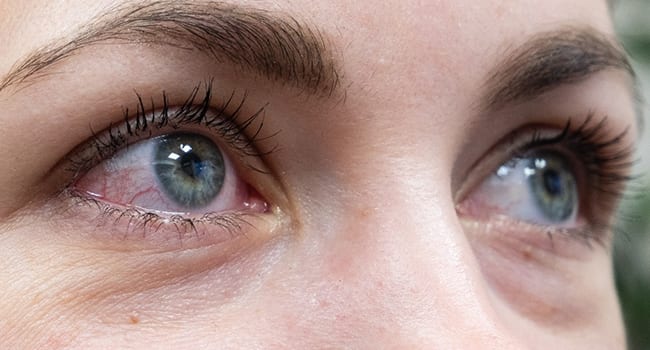Coughing, fever and difficulty breathing are common symptoms of the illness, but a recent case study involving an Edmonton woman and published in the Canadian Journal of Ophthalmology has determined that conjunctivitis and keratoconjunctivitis can also be primary symptoms.
In March, a 29-year-old woman arrived at the Royal Alexandra Hospital’s Eye Institute of Alberta with a severe case of conjunctivitis and minimal respiratory symptoms. After the patient had undergone several days of treatment with little improvement – and after it had been determined that the woman had recently returned home from Asia – a resident ordered a COVID-19 test. The test came back positive.
“What is interesting in this case, and perhaps very different to how it had been recognized at that specific time, was that the main presentation of the illness was not a respiratory symptom. It was the eye,” said Carlos Solarte, an assistant professor of ophthalmology at the U of A.
“There was no fever and no cough, so we weren’t led to suspect COVID-19 at the beginning. We didn’t know it could present primarily with the eye and not with the lungs.”
According to Solarte, academic studies at the outset of the pandemic identified conjunctivitis as a secondary symptom in about 10 to 15 per cent of COVID-19 cases.
Since then, scientists have gained greater knowledge of how the virus can transmit through and affect the body’s mucous membrane system, of which the conjunctiva – the clear, thin membrane that covers the front surface of the eye – is an extension.
Conjunctivitis and keratoconjunctivitis are now recognized by Alberta Health Services as possible primary symptoms of COVID-19.
While the finding provides important new health information for the public, it also makes eye exams more complicated for ophthalmologists and staff.
“The patient in this case eventually recovered well without any issues. But several of the residents and staff who were in close contact with the patient had to be under quarantine,” said Solarte. “Fortunately, none who were involved in her care also tested positive.”
Patients coming into an eye clinic with conjunctivitis and keratoconjunctivitis are now treated as potential cases of COVID-19 and extra precautions are taken by staff. Workers performing an eye exam are strongly advised to wear personal protective equipment to minimize potential exposure to the illness.
“It’s important to ensure that everyone is well protected. Our residents are now using gloves, gowns and facial masks every time they see one of these patients,” said Solarte. “We need to be really careful about protective measures to examine these patients.”
| By Ross Neitz
This article was submitted by the University of Alberta’s online publication Folio, a Troy Media content provider partner.
The views, opinions and positions expressed by columnists and contributors are the author’s alone. They do not inherently or expressly reflect the views, opinions and/or positions of our publication.



